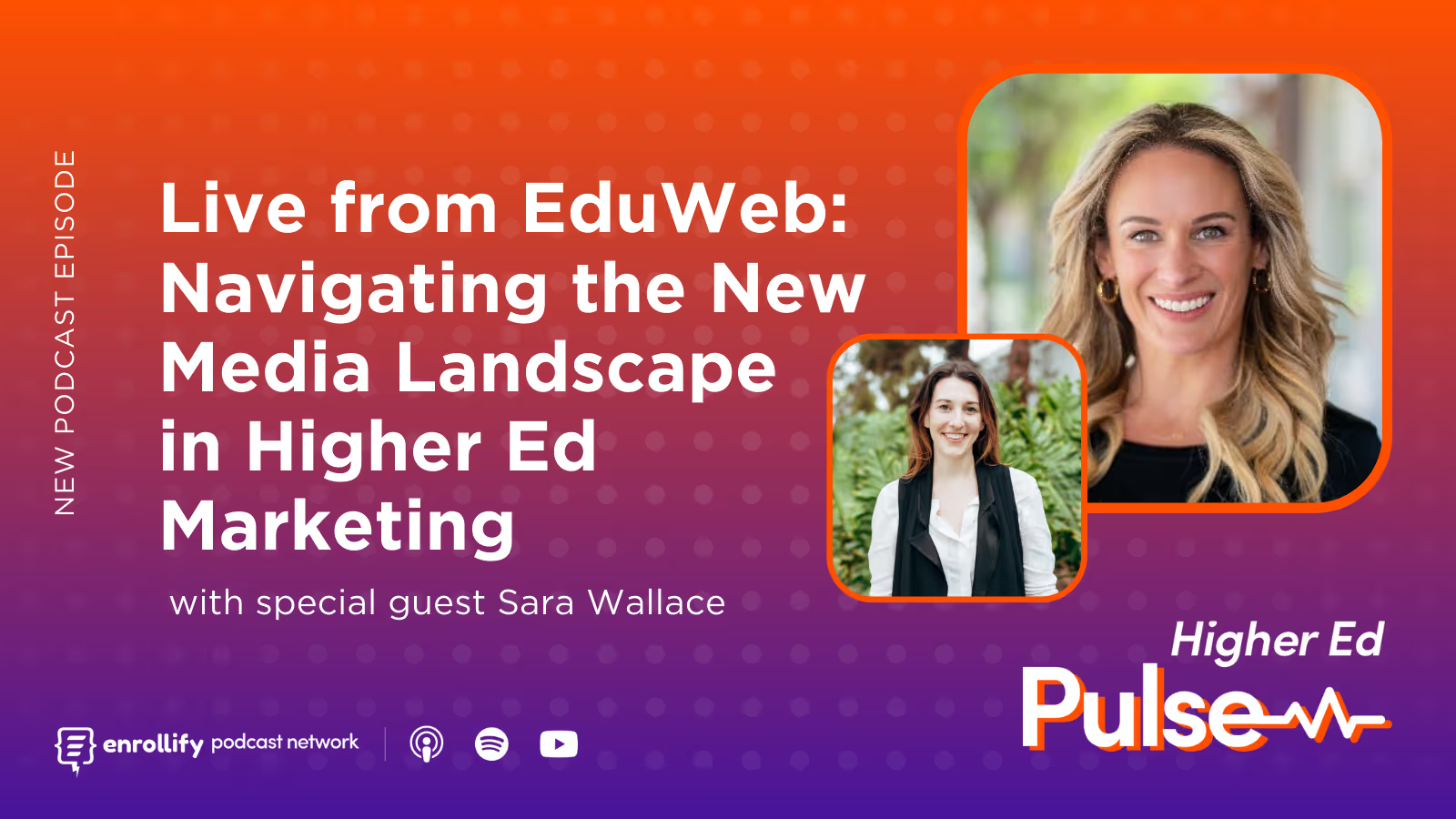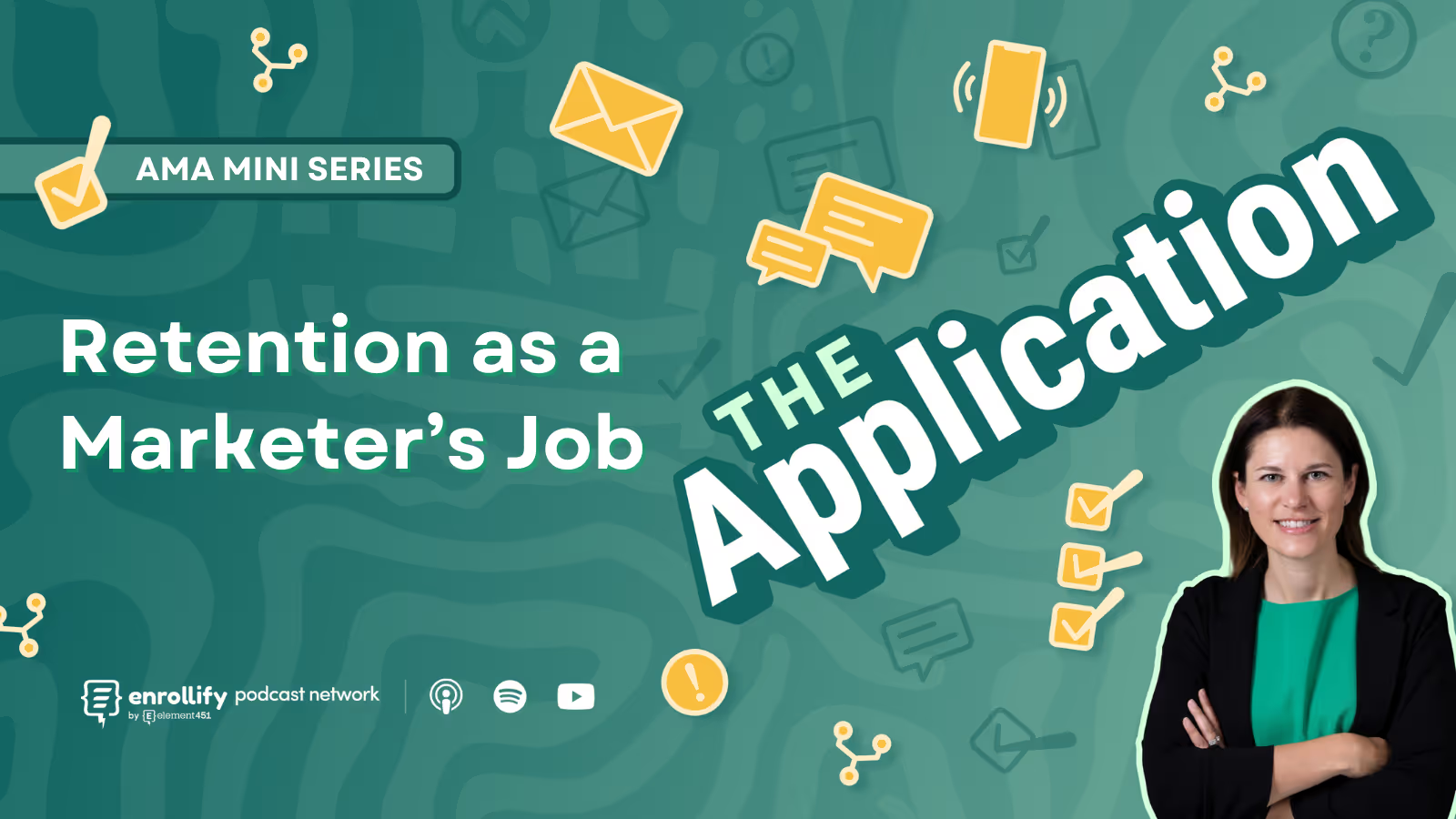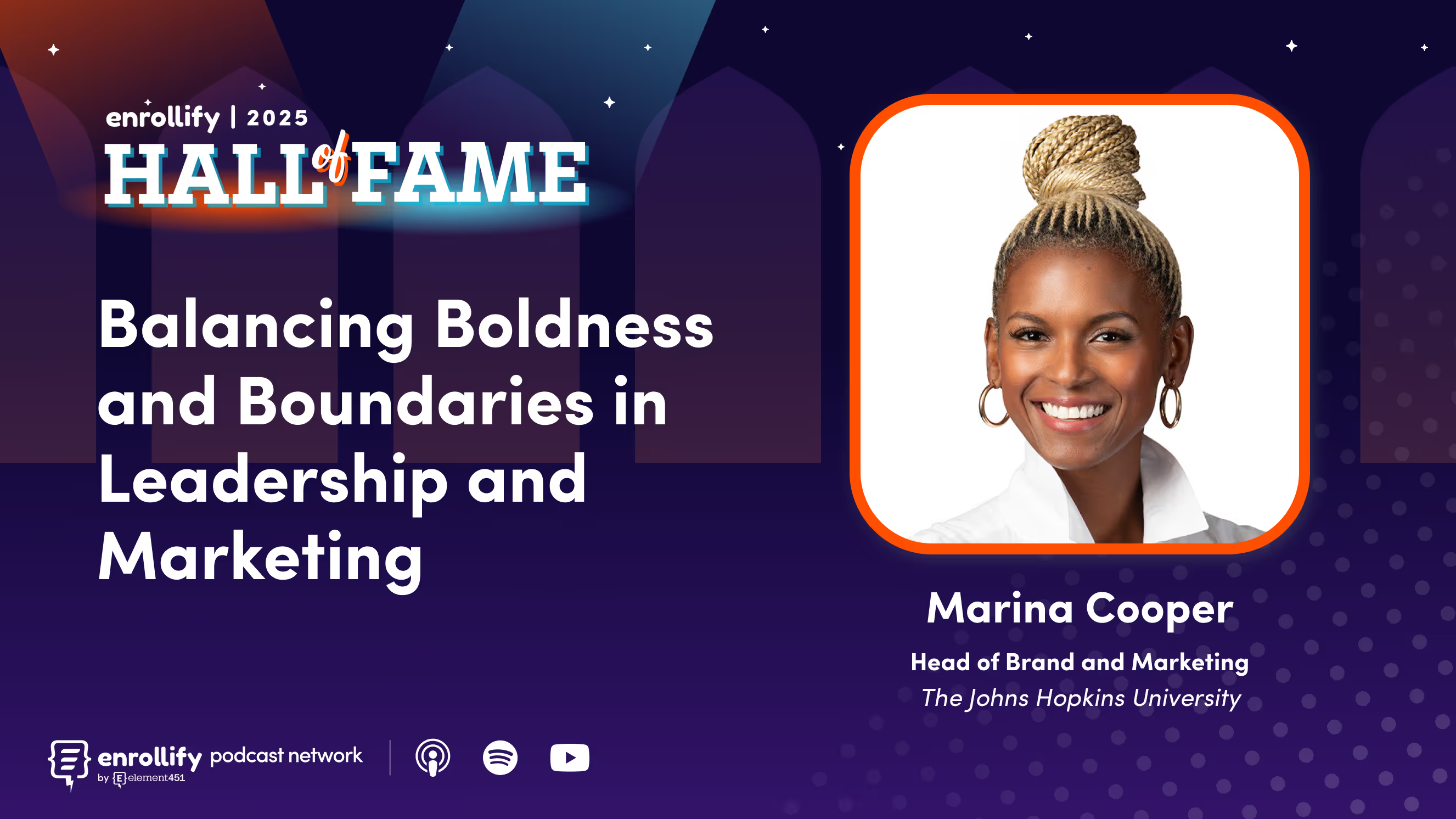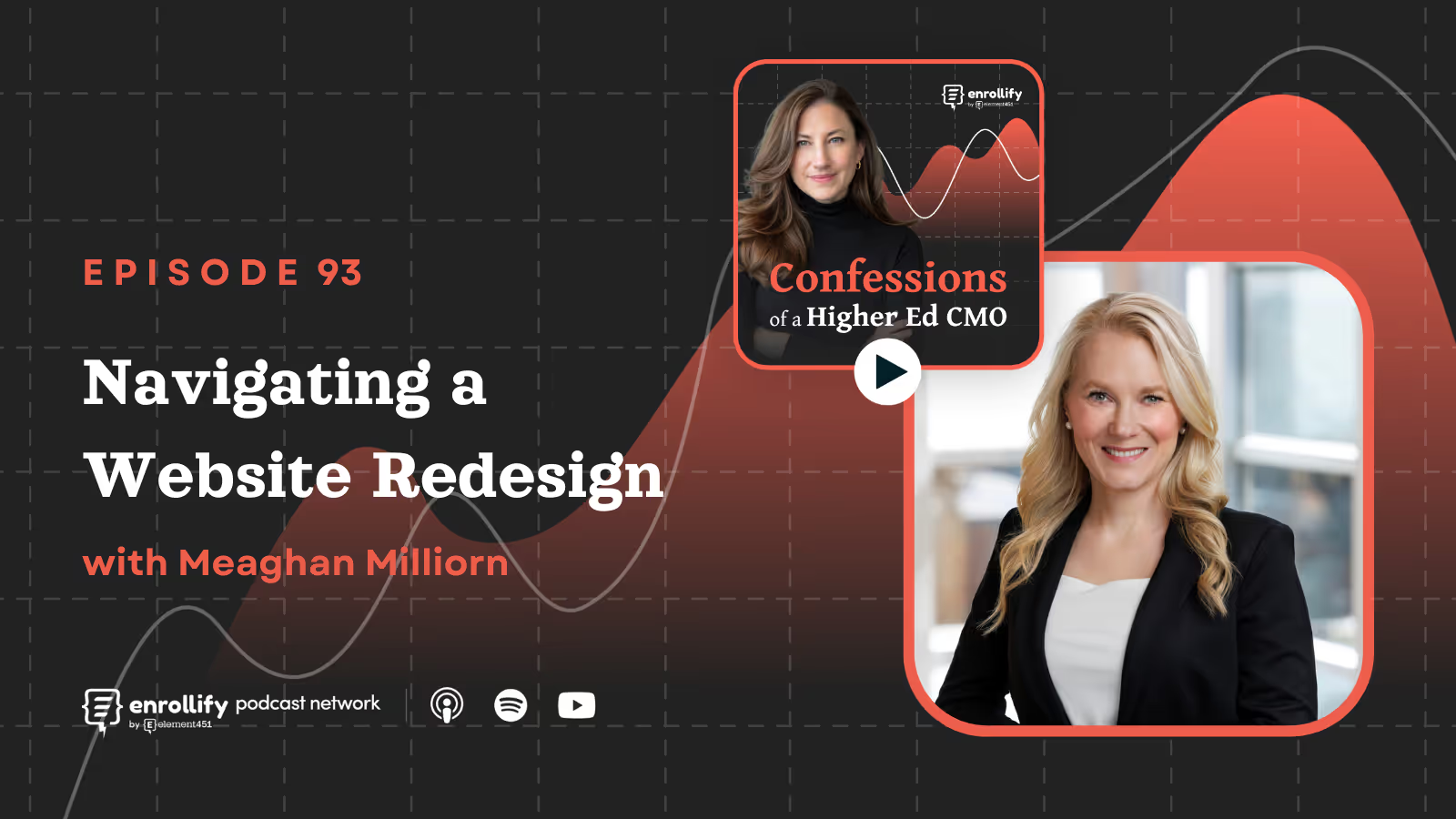About the Episode
About the Episode:
Live from eduWeb, Mallory sits down with Sara Wallace, VP of Strategy at Simpson Scarborough. They dive into Sara's presentation on balancing higher ed brands amidst today's dynamic media landscape. Key points include the rising competition, the evolving media landscape, and shifting audience expectations. Sara also shares a compelling case study on Chico State's successful marketing strategies.
Key Takeaways
- Increased Competition Demands Strategic Focus: Shrinking traditional student populations and escalating marketing spends mean institutions must prioritize smarter resource allocation.
- Brand Fuels Performance: Investing in brand-building at the top of the funnel strengthens lower-funnel conversions and enhances lead quality.
- Fragmentation and Privacy Require Adaptation: Higher ed marketers must balance audience expectations for personalization with demands for privacy in a fragmented media landscape.
- Understand and Meet Audience Expectations: To compete with consumer brands, institutions must create seamless, engaging brand experiences that resonate deeply with today’s students.
The New Era of Increased Competition
Sara Wallace begins by addressing a critical challenge in higher ed: increased competition for prospective students. Declining enrollment numbers, with a projected 15% drop in traditional-aged college students by 2026, have heightened the stakes for institutions. At the same time, the overall paid media spend across industries is expected to hit $870 billion by 2027, making digital advertising more crowded and expensive.
Adding to the challenge, many higher ed institutions face stagnant or declining marketing budgets. Sara emphasizes that institutions must rethink their approach to marketing—working smarter, not harder, by finding innovative ways to stand out and capture attention in an oversaturated marketplace.
Why Brand Building Drives Enrollment Success
While many institutions focus on the bottom of the enrollment funnel, Sara argues that higher ed marketers must prioritize brand investment at the top of the funnel. Strong brand recognition and positive reputation significantly influence student decision-making and drive higher-quality leads through to conversion.
In her session, Sara detailed how campaigns that align brand messaging with paid media strategies yield better results. For instance, focusing on brand reputation through targeted creative and storytelling ensures that performance campaigns—like paid search—become more effective. A compelling brand story not only engages prospective students but also builds trust, which is essential in an increasingly skeptical audience.
Navigating Media Fragmentation and Privacy Challenges
The conversation turns to the impact of media fragmentation and privacy concerns on higher ed marketing. With new privacy laws and growing consumer demands for data protection, institutions face tighter restrictions on targeting younger audiences and tracking user behavior. At the same time, today’s students expect highly personalized experiences.
Sara highlights that this tension requires institutions to dig deeper into audience research and creative messaging. By understanding what motivates students, marketers can craft campaigns that resonate without over-relying on intrusive tracking or excessive personalization. Institutions must also invest in platforms and tools that bridge these gaps, enabling them to meet privacy standards while maintaining meaningful engagement.
Meeting Rising Audience Expectations
Today’s students aren’t just comparing universities to other universities—they’re comparing their experiences to every other brand they interact with, from their favorite apps to e-commerce platforms. This means higher ed marketers need to deliver seamless, compelling, and personalized communications across every touchpoint, from social ads to email campaigns.
Sara notes that achieving this level of sophistication requires institutions to take a step back and evaluate their priorities:
- Who are we as an institution?
- Who are our audiences?
- How can we align our resources to create authentic and memorable experiences?
Without this foundation, institutions risk falling short of the elevated expectations of Gen Z and Gen Alpha students.
A Case Study in Brand-Driven Success: Chico State
Sara wraps up with a compelling case study from Chico State, a university that embraced a brand-first strategy. Over three years, SimpsonScarborough partnered with Chico State to align its marketing and admissions efforts, audit its martech stack, and integrate its brand and performance campaigns.
The results speak for themselves:
- An 11% increase in admits during their most recent enrollment cycle.
- A 28% increase in intent to enroll.
- Improved lead quality and stronger engagement metrics across the board.
By focusing on high-propensity audiences and enhancing their brand presence, Chico State proved that strategic brand investment pays off, both in the short and long term.
Connect With Our Host:
Mallory Willsea
https://www.linkedin.com/in/mallorywillsea/
https://twitter.com/mallorywillsea
About The Enrollify Podcast Network: The Higher Ed Pulse is a part of the Enrollify Podcast Network. If you like this podcast, chances are you’ll like other Enrollify shows too!
Some of our favorites include Generation AI and Confessions of a Higher Education Social Media Manager.
Enrollify is made possible by Element451 — the next-generation AI student engagement platform helping institutions create meaningful and personalized interactions with students. Learn more at element451.com.















